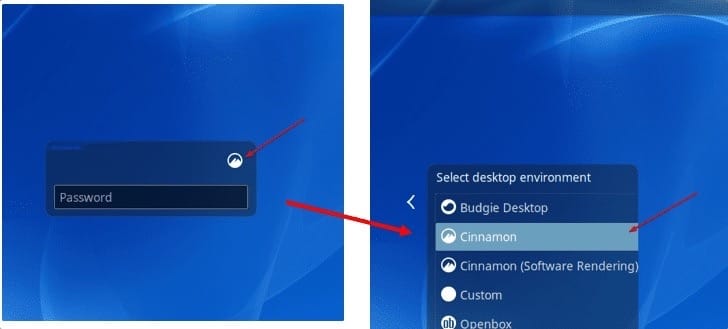How To Install Cinnamon on AlmaLinux 9

In the world of Linux, desktop environments play a crucial role in shaping the user experience. Among the various options available, Cinnamon stands out as a modern, elegant, and user-friendly choice. This article will guide you through the process of installing Cinnamon on AlmaLinux 9, a stable and enterprise-focused distribution based on Red Hat Enterprise Linux (RHEL). By following these steps, you’ll be able to enjoy the sleek interface and powerful features of Cinnamon on your AlmaLinux 9 system.
Understanding Cinnamon and AlmaLinux 9
What is Cinnamon?
Cinnamon is a desktop environment that originated as a fork of GNOME 3. Developed by the Linux Mint team, Cinnamon aims to provide a traditional desktop experience with modern features. Some key advantages of Cinnamon include:
- Intuitive and customizable interface
- Efficient system resource usage
- Active development and community support
- Seamless integration with GTK-based applications
AlmaLinux 9 Overview
AlmaLinux 9 is a community-driven, enterprise-grade Linux distribution that serves as a drop-in replacement for RHEL. It offers:
- Long-term stability and support
- Binary compatibility with RHEL
- Regular security updates and patches
- A robust foundation for various workloads
Combining Cinnamon with AlmaLinux 9 allows users to enjoy a modern desktop experience on a rock-solid, enterprise-ready platform.
Prerequisites
Before proceeding with the installation of Cinnamon on AlmaLinux 9, ensure that you have:
- A system running AlmaLinux 9 with at least 2GB of RAM and 20GB of free disk space
- Root access or sudo privileges on your AlmaLinux 9 system
- A stable internet connection for downloading packages
- Basic familiarity with command-line operations
It’s also crucial to have an up-to-date system before beginning the installation process.
Preparing the System
To ensure a smooth installation process, follow these steps to prepare your AlmaLinux 9 system:
1. Update the System
Open a terminal and run the following command to update your system:
sudo dnf update -yThis command will fetch and install the latest updates for your AlmaLinux 9 system.
2. Install EPEL Repository
The Extra Packages for Enterprise Linux (EPEL) repository provides additional packages that are not included in the default AlmaLinux repositories. To install EPEL, run:
sudo dnf install epel-release -y3. Enable Additional Repositories (if necessary)
Depending on your specific needs, you may need to enable additional repositories. For most users, the default repositories and EPEL should suffice for installing Cinnamon.
Installing Cinnamon Desktop Environment
Now that your system is prepared, let’s proceed with the installation of Cinnamon:
1. Install Cinnamon and Required Packages
Use the DNF package manager to install Cinnamon and its dependencies:
sudo dnf groupinstall "Cinnamon Desktop" -yThis command will install the Cinnamon desktop environment along with all necessary packages.
2. Handle Dependencies
DNF will automatically resolve and install any required dependencies. If prompted, confirm the installation by typing ‘y’ and pressing Enter.
The installation process may take some time, depending on your internet connection speed and system performance. Be patient and allow the process to complete.
Configuring the Display Manager
After installing Cinnamon, you need to configure the display manager to use it:
Understanding Display Managers
A display manager is a graphical login screen that appears when you boot your system. AlmaLinux 9 typically uses GNOME Display Manager (GDM) by default. However, you can also use alternatives like LightDM if preferred.
Configuring the Chosen Display Manager
If you’re using GDM, it should automatically detect the newly installed Cinnamon desktop. For LightDM or other display managers, you may need to update the configuration file.
Setting Cinnamon as the Default Desktop Environment
To set Cinnamon as the default desktop environment, create or edit the file /etc/X11/default-display-manager and add the following line:
/usr/sbin/cinnamon-sessionSave the file and exit the editor.
First Boot into Cinnamon
Now that Cinnamon is installed and configured, it’s time to log in and explore your new desktop environment:
1. Log Out of the Current Session
If you’re currently logged in to a graphical session, log out to return to the login screen.
2. Select Cinnamon at the Login Screen
At the login screen, look for a gear icon or desktop environment selector. Click on it and choose “Cinnamon” from the list of available options.

3. Initial Cinnamon Desktop Tour
After logging in, you’ll be greeted by the Cinnamon desktop. Take a moment to familiarize yourself with the layout:
- The panel at the bottom contains the main menu, task switcher, and system tray
- The desktop itself can be customized with icons and widgets
- The Cinnamon menu in the bottom-left corner provides access to applications and system settings
Customizing Cinnamon on AlmaLinux 9
One of Cinnamon’s strengths is its high degree of customizability. Here are some ways to personalize your Cinnamon desktop:
Exploring Cinnamon Settings
Open the Cinnamon menu and navigate to “System Settings” to access various configuration options, including:
- Appearance settings for themes and icons
- Panel and menu customization
- Workspace and window management options
- Hardware and device settings
Theming and Appearance Options
Cinnamon supports a wide range of themes and icon sets. To change the theme:
- Open System Settings
- Navigate to “Themes”
- Choose from available themes or download new ones from the Cinnamon Spices website
Adding Applets and Extensions
Enhance your Cinnamon experience with applets and extensions:
- Right-click on the panel and select “Add applets to the panel”
- Browse available applets or download new ones from the Cinnamon Spices website
- For extensions, go to System Settings > Extensions and enable or add new ones
Troubleshooting Common Issues
While installing and using Cinnamon on AlmaLinux 9, you may encounter some issues. Here are solutions to common problems:
Resolving Package Conflicts
If you experience package conflicts during installation, try the following:
- Update your system and repositories:
sudo dnf update - Clear DNF cache:
sudo dnf clean all - Attempt the installation again
Fixing Display Issues
If you encounter display problems:
- Check your graphics drivers and update if necessary
- Try resetting Cinnamon settings:
gsettings reset-recursively org.cinnamon - Ensure your display manager is correctly configured
Addressing Performance Concerns
If Cinnamon feels sluggish:
- Disable unnecessary visual effects in System Settings > Effects
- Reduce the number of active applets and extensions
- Consider upgrading your hardware if it doesn’t meet the minimum requirements
Optimizing Cinnamon for AlmaLinux 9
To get the most out of Cinnamon on AlmaLinux 9, consider these optimization tips:
Performance Tweaks
- Enable compositor vsync to reduce screen tearing
- Adjust window manager settings for smoother animations
- Use a lightweight theme if running on older hardware
Resource Management Tips
- Monitor system resources using the System Monitor applet
- Close unused applications to free up memory
- Use lightweight alternatives for resource-intensive applications when possible
Congratulations! You have successfully installed Cinnamon. Thanks for using this tutorial for installing the Cinnamon Desktop Environment on your AlmaLinux 9 system. For additional help or useful information, we recommend you check the official Cinnamon website.